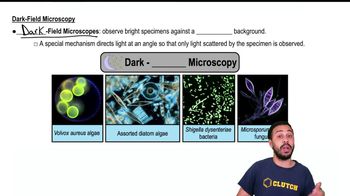Multiple Choice
What is the most common type of light microscope? And how does it work?
847
views
6
rank
 Verified step by step guidance
Verified step by step guidance Verified video answer for a similar problem:
Verified video answer for a similar problem:



 3:46m
3:46mMaster Light Microscopy: Bright-Field Microscopes with a bite sized video explanation from Jason
Start learning